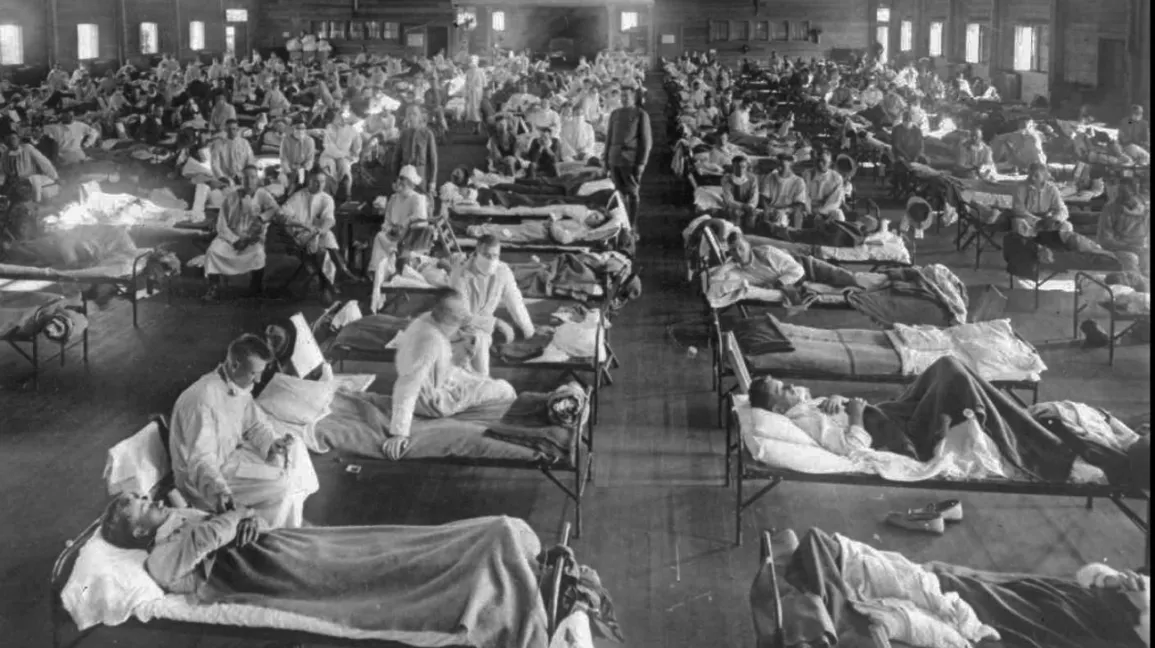A kind of influenza flu caused by the H1N1 virus that originated in birds was referred to as Spanish flu or avian origin. There was a pandemic of Spanish flu a novel influenza. Viruses that easily transmitted and affect people all across the world. Due to the Novelty of the virus very few, if any, were immune to this illness.
The Spanish flu caused sickness in an estimated 500 million individuals between 1918 and 1990. At the time this equaled roughly 33% of the global population. Additionally, 50 million individuals died from Spanish flu. In the United States alone, there were roughly 675000 deaths. Similar to the COVID pandemic, those over 65 and infants under 5 are especially vulnerable to the Spanish flu. Spanish flu was unique in that it also claimed a great deal of life from healthy people between the ages of 20 to 40.
Why did the Spanish flu break out?
Subsequent studies revealed that the Spanish to another type of influenza virus that originated in a bird host, sometimes known as the bird flu. It was then spread to mammals. Seasonal flu epidemic outbreaks in communities are caused by influenza types A and B. You only influenza strength known to date to cause the pendemic type A strains.
In what ways was the Spanish flu avoided?
There were no rational methods in place to fight against the Spanish flu. Certain communities did implement preventive measures that would sim recognizable to us now. Among the actions were:
- Isolation or avoiding crowding areas. Closing schools and gyms was part of it.
- Cleaning your hands thoroughly and frequently
- Wedding gloves and masks for protection
- Keeping objects like library books on the ground
- Avoiding spitting in the open.
What caused the Spanish flu to be fatal?

The following are some of the causes of the fatality of the virus:
- The absence of a successful treatment plan, because the causes were not identified at the time.
- The claustrophobic conditions under which humans and animals particularly the armed forces lived during World War 1.
- Scarcity of medical professionals. A Large number of Medical professionals were serving in the military.
- The virus’s immutable capacity to replicate itself and spread to the lungs. This final characteristic was first discovered when studying the 1918 virus with the tissue recovered from Spanish flu fatalities.
What are the differences and similarities between COVID-19 and Spanish flu?
The covid 19 virus and the Spanish virus are not the same. They are compatible in that both respiratory viruses are contracted by breathing in respiratory droplets. Contaminated with viruses furthermore, both of them had the potential to induce acute respiratory discuss syndrome. Additionally, the methods that governments used to fight them are comparable.
What social changes resulted from the virus a century ago
Life expectancy increased temporarily as a result of the large exodus of those who were severely ill with diseases like tuberculosis, which was the major cause of death at the time. Since they were already compromised they most likely died from Spanish flu first. Those who remained alive were healthier while the sick people passed away.
The war and the men returning from the battlefield have traditionally been blamed for the 1920s baby boom as well. However, some are you that the virus may have played a role because it left behind the healthy are smaller population that was more able to procreate. Despite being neutral in the world Norway saw a baby boom.
The 20-40 age group was one that was particularly affected by the illness. Usually, young children and the elderly are the most vulnerable to the flu but strangely in 1918, it was the middle age group that was most at risk. Even in wealthier Nations, there wasn’t much of a social safety net, so many dependents were left without any means of support when the virus killed the bread earners.

